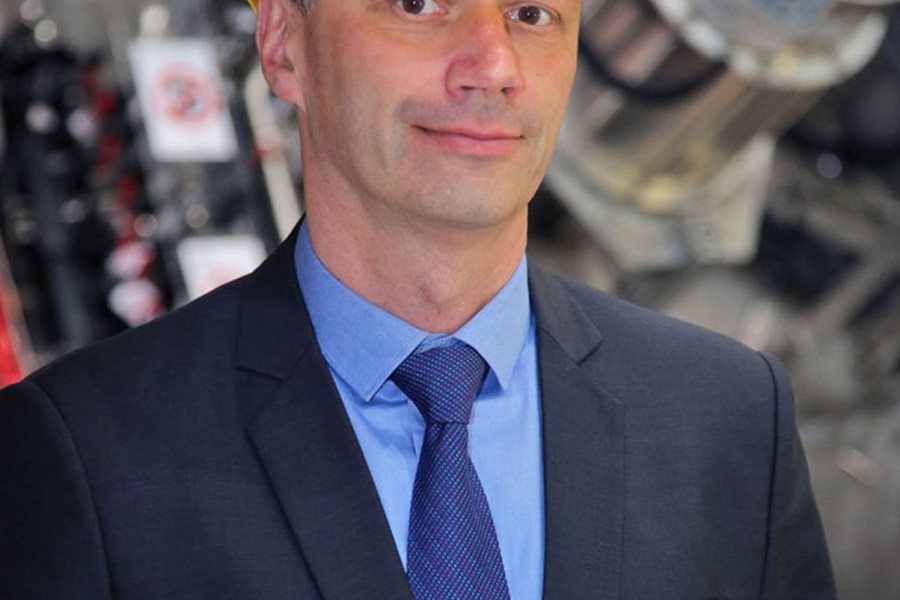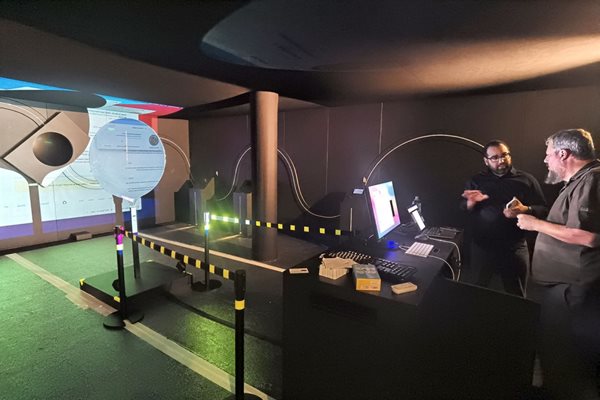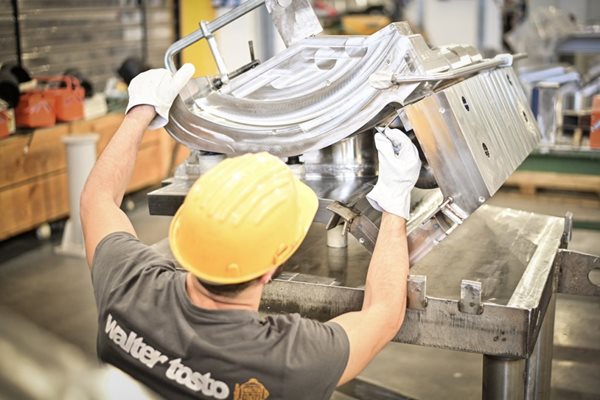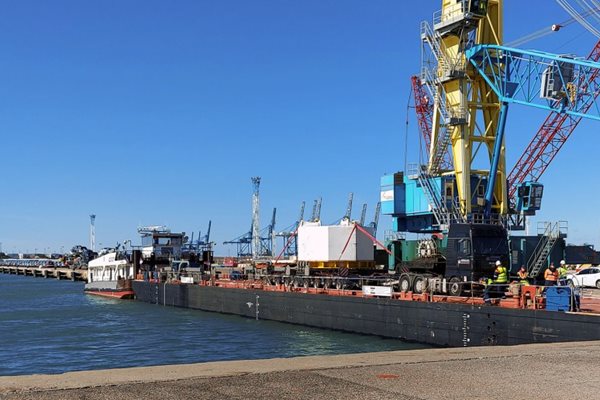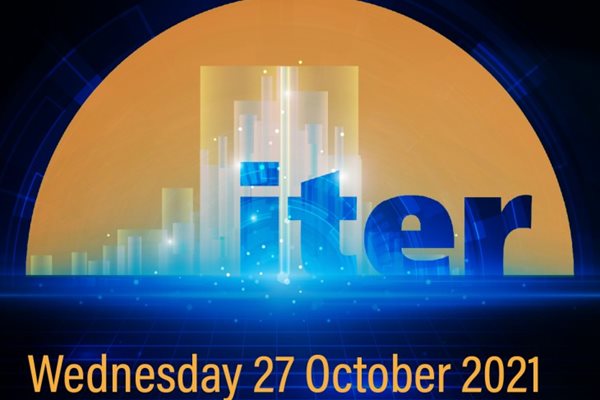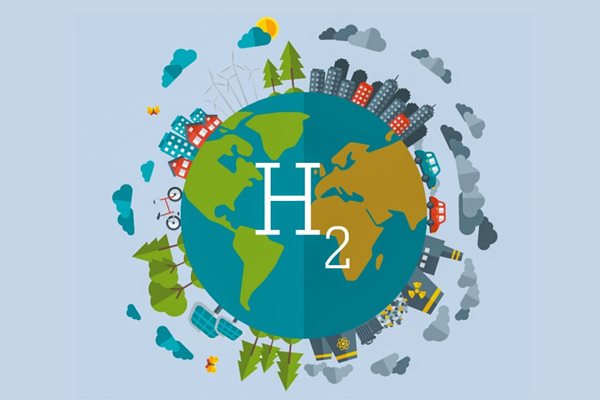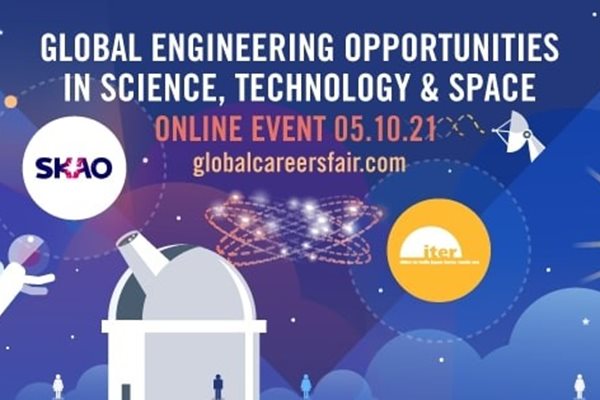
you're currently reading the news digest published from 04 Oct 2021 to 11 Oct 2021
featured4
of-interest3
press18
featured
Fusion world | Stellarators "an option" for future power plants
In the history of magnetic fusion, the photo is iconic. A smiling, bespectacled middle-aged man stands next to a strange contraption sitting on a makeshift wooden table. The man is Princeton astrophysicist Lyman Spitzer; the contraption is the first attempt at building a fusion machine, the Figure 8-Model A stellarator. Stellarators have come a long way since Spitzer's machine was built in 1952. After falling victim to the success of tokamaks in the late 1960s, these peculiar and contorted machines were the focus of renewed attention three decades ago thanks, mostly, to progress achieved in computer-assisted design. Today, realizing the promise of the stellarator design rests on a handful of machines, foremost among them Wendelstein 7-X, operated in Greifswald, Germany, by the Max Planck Institute for Plasma Physics. In the interview below, Thomas Klinger, the scientific director of the Wendelstein 7-X project, tells us about the project's progress, challenges and perspectives. When asked in a 2011 Newsline interview how stellarators differed from tokamaks, you said, "In a stellarator, confining the plasma is like holding a broomstick firmly in your fist; in a tokamak, it's like trying to balance the same broomstick on your finger." Ten years later, how well is Wendelstein 7-X holding the broomstick? Very well indeed. Our experience with Wendelstein 7-X during its first two operation phases was entirely positive, especially with regard to stability and controllability. After appropriate conditioning of the first wall with glow discharges and a thin layer of boron carbide, we have obtained high plasma densities and good plasma temperatures, taking into account that the plasma heating power was not yet available at the foreseen levels. One of the highlights was the demonstration of full function of the so-called island divertor of Wendelstein 7-X, which paved the way for constant and stable high density plasmas running for 30 seconds without interruption. With additional plasma fuelling with ice pellets, we have even achieved a stellarator record value of the triple product, though only transiently yet. These were remarkable results. We also learned that plasma turbulence plays the major role, like in tokamaks, since the neoclassical transport in Wendelstein 7-X could be reduced to a minimum thanks to the optimized magnetic field. So it is not all 'blue sky': the plasma turbulence sets a limit to the maximum achievable ion temperature. What are the next steps in the Wendelstein 7-X scientific program? During the previous operation phases it turned out that, due to plasma turbulence, it is not a straightforward path to obtaining high ion temperatures by heating the electrons with strong microwaves, which is the main heating scheme on Wendelstein 7-X. In the already-mentioned record plasmas, turbulence was significantly reduced by making the radial density profile much steeper—e.g., by ice pellet injection—and consequently the ion temperature went up a lot. This is something we have to explore much more deeply. For that, a new ice pellet injector has been installed within the framework of a close collaboration with US fusion laboratories, namely the Oak Ridge National Laboratory and the Princeton Plasma Physics Laboratory, which provide the major components in-kind. Interestingly, this is a kind of prototype of the ITER ice pellet injector. Furthermore, Wendelstein 7-X is now equipped with fully water-cooled in-vessel components, which opens the gate to long-pulse operation of high-performance plasmas heated with 10 MW of power. It will surely be a step-by-step process to go from a few seconds to half an hour of plasma duration at full heating power. Decisive is again the island divertor, which has to deal with continuous particle and heat exhaust, made possible by pressure water-cooling and strong vacuum pumping. The relevant scenarios are basically available, but they have to be extended to very long plasma discharge durations. Finally, Wendelstein 7-X will have way more plasma heating power available, especially with the full availability of neutral beams and radiofrequency heating for fast-particle studies. More heating power will give access to a much broader operation space, in particular to higher temperatures at high plasma density. For the next operation phases, Wendelstein 7-X will have more and improved plasma diagnostic systems and completely revised control and data acquisition systems. This is now an excellent starting point for a comprehensive research program over the coming years. We are establishing task forces, and the call for experiment proposals will be sent out in spring next year. In what way can the feedback from Wendelstein 7-X be beneficial for ITER, and vice-versa? Wendelstein 7-X has made considerable technology input to ITER. One example is the long-pulse gyrotrons for the microwave heating of the plasma electrons. Because of the mission of Wendelstein 7-X as an inherently steady-state device, there is a need for a flexible and efficient long-pulse heating scheme. We enjoy a long-term partnership with the Karlsruhe Institute of Technology in Germany, where 1 MW gyrotrons with 1800 second pulse length were developed in close collaboration with industry. These gyrotrons turned out to be the backbone of the Wendelstein 7-X heating systems and they serve as a blueprint for ITER. A second example is assembly technology. The Wendelstein 7-X team was keen to share its experience on device assembly, both in detailed engineering solutions and organization. Altogether, we have established a close technology link to ITER, especially on the working level. On the other hand, looking forward, the stellarator line ultimately needs the experience of ITER to operate a plasma in a nuclear environment as well as understand the fast-particle physics of the plasma. The quest for harnessing fusion energy began 70 years ago with Lyman Spitzer's Figure 8 stellarator. When Soviet physicists began developing tokamaks and when tokamaks' performance was confirmed in the late 1960s, the stellarator option was all but abandoned. What happened? Tokamaks have just shown better plasma performance in terms of magnetic confinement. This was motivation enough for many fusion research laboratories in the world to put the focus on tokamaks. The requirement to run the plasma continuously was for a long time not the first priority. The biggest advantage of the stellarator concept is, however, that the vacuum magnetic field already shows plasma confinement and there is no need for a strong current in the plasma. Both inherent features make the stellarator steady-state capable and also more stable in operation. This motivated a small international group of scientists to look for the reason behind the poor plasma confinement properties of stellarators. Using the early supercomputers, they were eventually able to solve the physics problem and the outcome is an optimized magnetic stellarator field, manifested by the famous shaped magnetic field coils of Wendelstein 7-X. With the exception of Wendelstein 7-X, the Japanese LHD and the much smaller HSX at the University of Wisconsin, there seem to be no operating stellarators in the world today and among all the startups, it seems that only one (Renaissance Fusion, based in Grenoble, France) is exploring the stellarator option. How do you explain this situation? For reasons outlined in my last answer, the fusion world is dominated by tokamaks. Also, stellarators are a bit behind in their development. This is due to the more complex structure of the stellarator's magnetic field, which makes computer simulations significantly more expensive. Since the development of a fusion device is driven largely by computer simulations, both in physics and in engineering, this fact has an impact. Last but not least, the engineering of a stellarator needs different tools that can deal with the particular geometry. These tools became available only more recently. It may well be that the more straightforward engineering of a tokamak is on the first sight more appealing, especially for startups. You have often been quoted saying that stellarators could be an option for a DEMO. What could be the steps to such a project? Certainly, the stellarator is an option for a future fusion power plant. However, before a decision can be made, we need more data and experience, especially from Wendelstein 7-X which is just at the beginning of its research program. ITER's operational experience with a burning plasma and tritium breeding is also needed before a concept for the next-step device can be pinned down. How close the stellarator next-step device is to the present understanding of a DEMO, the future will have to show.
Fusion events | Bringing power to the people
In tandem with the annual Fête de la Science, a French exhibition on the sciences, the European research consortium EUROfusion is premiering a new travelling exhibition on fusion in Marseille, France. The 30th edition of the Fête de la Science opened on 1 October, bringing together hundreds of scientific organizations and thousands of volunteers to showcase their work through engaging displays and interactive exhibits. From 9-10 October, the ITER Organization joined the event in Marseille. A cluster of tents set up at the Hôtel de Ville drew in a multigenerational crowd, and in the midst of it all was ITER's stand on fusion, featuring globes of shivering blue plasma. But for those who missed the event, a fusion exhibition that has been years in the making has only just opened in Marseille and will stay open until mid-December. EUROfusion's exhibition, Fusion: Power to the People began as an idea to introduce the public to fusion. 'Fusion energy is not familiar to most, but we believe it's a vital topic for people to explore,' Mohamed Belhorma said in a recent press release on the event. He is an outreach officer for EUROfusion and played a major role in conceptualizing the exhibition and bringing it to life. The first sight as the visitor enters the exhibition space is an introductory video. Stars burn and neutrons fuse, and the visit continues with a series of curiosities. Visitors are enveloped in a velvety darkness, with spotlights puncturing the space like stars in the night sky. These spotlights illuminate a spiral of copper, a metallic rod or a circle of compasses. The QR codes on the side of each display are the key to understanding these pieces, with each code opening a video on the visitor's phone. Each piece demonstrates the power of magnetism, a crucial factor in controlling plasma during a fusion reaction. Each video is short, but packed with information giving the visitor a new piece of the puzzle. In another area, a series of vintage television screens are set up to resemble a control room. Others showcase the history of many different fusion projects, including WEST, COMPASS and ITER. The expo looks to the past in its journey through time, but also envisions the future. "We are convinced that fusion has an important role to play in sustainable energy and we want to have a discussion with the public about what that role could be," explains Belhorma. The exhibition blends virtual and real worlds by combining tech, science and art into one cohesive experience. More pieces of the Fusion Expo are yet to unfold, as more interactive elements are layered on the pre-existing exhibit. An app will take visitors through a treasure hunt of sorts, finding clues to solve puzzles and learning more about fusion along the way. EUROfusion's Fusion Expo is free and open to the public at Les Docks in Marseille, France, until 19 December 2021, hosted with the participation of the French Alternative Energies and Atomic Energy Commission (CEA) and partners ITER Organization and Aix-Marseille University (AMU), in particular the Institute for Fusion Sciences and Instrumentation in Nuclear Environments ISFIN. It is open daily from 10:00 to 19:00. Once the Expo closes in Marseille, it will travel across Europe to bring fusion education to an even wider audience. To learn more about the event, visit EUROfusion's website here. (Information in French can be found here.)
Divertor cassettes | Europe awards final contract
Fifty-four divertor cassettes form the backbone of a unique system designed to exhaust waste gas from the ITER machine and minimize impurities in the plasma. In Europe, the final contract for divertor cassette manufacturing has been signed, with delivery expected between 2025 and 2027. Divertor cassette bodies are uniquely contorted objects that weigh close to 5 tonnes each. Shaped approximately like a 'U' with flared edges, each cassette body hosts three targets on its plasma-facing surfaces; on the backside, the cassettes align perfectly with circular rails at the bottom of the vacuum vessel to lock into place. The cassettes form the backbone of the ITER divertor, designed to withstand heat loads comparable to those that would be encountered at the surface of the Sun and to resist the huge mechanical forces that could be exerted by plasma disruptions. The cassettes provide neutron shielding to the vacuum vessel and a route for divertor water coolant; some also host diagnostics and instrumentation. The shaping and forming of these unique objects in austenitic steel—to extremely demanding specified tolerances—require such a high level of precision machining and proficiency in welding that four years of prototyping and testing were necessary before the manufacturing contracts could be awarded. The European Domestic Agency Fusion for Energy put European industry to the test through a competitive prototyping phase, during which it worked with different suppliers to help them to develop the necessary know-how and test their skills during production. Beginning in 2013, the Fusion for Energy team supported selected European contractors as they engineered, manufactured and finally tested real-size cassette prototypes. On completion of the prototyping phase in 2018, initial contracts were awarded to the Italian company Walter Tosto (15 cassette bodies) and the Italian-French consortium CNIM-SIMIC (4 cassette bodies) for delivery by 2025. The remaining cassettes—which presented some added complexity such as the requirement to accommodate specific diagnostics or operational instrumentation—have now been awarded. Walter Tosto will manufacture the remaining 38 units, plus one optional, for delivery by 2027. See the original article on the Fusion for Energy website.
Image of the week | 2nd central solenoid module on its way
A second module for the ITER central solenoid, the "most powerful magnet in the world," is on its way to ITER. Procured by US ITER and manufactured by General Atomics in San Diego, California, the 110-tonne element was transported by road to Houston, Texas, and loaded on an ocean-faring vessel on 17 September 2021. The load was received in France at Fos-sur-Mer harbour on 6 October, placed on a trailer, and brought aboard a barge to cross the inland sea Étang de Berre. The superconducting magnet will now travel by convoy across Provence on the ITER Itinerary before passing through the ITER gates on Thursday 14 October—just one month after the first module reached the construction site on 9 September. The tall central solenoid magnet—18 metres in height, 1,000 tonnes—will be assembled at ITER from six individual modules and a strong supporting structure.
of-interest
Coming up: virtual Open Doors Day at ITER
The ITER Organization is organizing a virtual Open Doors Day on Wednesday, 27 October 2021. The three-hour event will be offered in English (afternoon) and French (morning). 'Visitors' who sign up through an on-line portal will have a chance to attend a general presentation on the ITER Project, take self-guided virtual visits through the main buildings on site, and browse through a virtual exhibition centre featuring some of ITER's manufacturing and construction partners. A number of surprises are also planned ... think virtual reality, DIY, livestreams and we've even heard a rumour about a 'plasmagician,' but we have no more information at this time ... (Age recommendation: 7 and up). Follow the links to sign up in English or French.
Towards a "hydrogen economy"
Whether burning in a fuel cell or engine, or 'fusing' in a tokamak, hydrogen will play a major role in clean energy production and consumption. In a recent article in the The European Files, ITER Director-General Bernard Bigot explores the potential benefits of a (near) future 'hydrogen economy' that would include fusion as a 'highly concentrated baseload energy source' and as a technology that could 'produce clean hydrogen' to, among different uses, power transport vehicles. 'Like electricity, hydrogen is not a primary fuel,' writes the ITER Director-General. It is produced using different energy sources, fossil fuels among them. Therefore, the environmental impact of this 'grey hydrogen' is far from being neutral. 'To make the hydrogen economy truly green,' he argues, 'we will need a clean source of concentrated baseload energy." Hydrogen fusion has all the characteristics to fill that requirement. Read the full article here.
Global engineering opportunities in big science
The European Organization for Nuclear Research (CERN), the European Space Agency (ESA), ITER and the Square Kilometre Array Observatory (SKAO) came together to host an online career event on 5 October 2021. The information session was designed to inform participants of the many diverse options available for engineers interested in science, technology and space. Four speakers represented the four organizations involved in the event: Anna Cook from CERN Elena Saenz from ESA Deirdre Boilson from ITER Maria Gracia Labarte from SKAO These four representatives discussed not only what their organizations do, but also explained what the working culture is like and what they love about their jobs. You don't have to be a rocket scientist to apply, they agreed. Passion is most important. Though the event was held via livestream, a recording is available on YouTube here.
